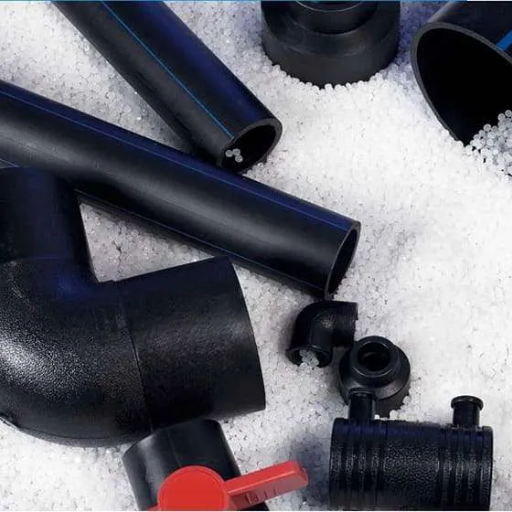Material selection is crucial for efficiency, durability, and cost-saving in the fast-paced world of industrial piping systems. High-Density Polyethylene (HDPE) is one of the leading materials in the industry because of its exceptional properties and versatility. This article explores HDPE pipe fittings by discussing their characteristics, advantages, and applications within different industries. Consequently, readers will be able to understand why HDPE fittings are increasingly becoming most companies’ preferred choice when it comes to long-lasting solid pipes.
What Are HDPE Pipe Fittings?
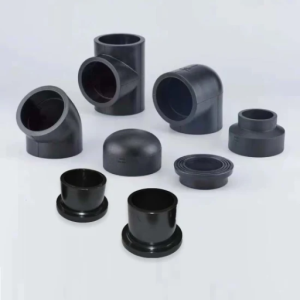
Image source: https://changyuantrade.en.made-in-china.com/
HDPE pipe fittings are tools used for joining, stopping, or altering the movement fluid through pipes made from High-Density Polyethylene. The fittings come in different specifications, including elbow, tee, couplings, and flanges so that pipes can be flexibly routed for various uses. Their resistance to impact, chemicals, and corrosion makes HDPE fittings last longer, making them the ideal option for applications such as water supply networks, sewage lines, and manufacturing plants. Furthermore, the lightweight nature of these HDPE fittings simplifies installation activities and reduces transport costs, increasing their attractiveness even more.
HDPE: Understanding High-Density Polyethylene
High-Density Polyethylene (HDPE) is a petrochemical thermoplastic polymer with high specific strength. It is commonly recognized as versatile, robust, and capable of handling many chemicals; hence, HDPE is widely used in various industrial applications. HDPE is frequently used to produce bottles, pipes, liners, and artificial wood. Characteristics of this material include excellent resistance against shock loads, low moisture absorption, and it melts at approximately 130 °C (266 °F). Moreover, the fact that HDPE can be recycled adds value to it in the context of the current promotion of sustainable manufacturing. Being resistant to demanding environments and harsh conditions, HDPE plays an instrumental role in pipe fittings and other piping systems across numerous sectors.
Pipe: The Role of HDPE in Piping Systems
My experience shows me how crucial HDPE piping systems are for contemporary infrastructures due to their strength and adjustability. The material has a unique resistance to corrosion and chemicals, which makes it desirable for various purposes such as water provision and waste management. What I find interesting about HDPE pipes is their weightlessness, making installations easier while reducing transport expenses. Unlike others, they can cater to ground movement or any kind of displacement in most places. This eco-friendly feature of HDPE, whose entire lifecycle allows for recycling, embraces the growing need for environmental engineering practices in construction projects. Altogether, HDPE provides credible solutions for different industries’ piping requirements at a reasonable cost.
HDPE Fittings: Different Types and Their Uses
HDPE pipes are joined by HDPE fittings in different applications. Several types of these fittings are available in the market, and each has its own use.
- Elbows: These fittings allow for a change in the direction of flow through the pipe system, and they are commonly found at angles of 45 degrees or 90 degrees.
- Tees: Tees facilitate branching off into another line from the main one, vital for fluid distribution.
- Couplings: They join two pipes with similar diameters; they are crucial in extending pipe runs without losing flow rate efficiency.
- Reducers: These fittings act as bridging gaps between pipes with different diameters to ensure a smooth transition and accommodate various rates of flow.
- Flanges: These mechanisms provide efficient ways for joining piping systems, enabling easier maintenance work and subsequent modifications.
All kinds of HDPE fittings have been created to endure the same environment as HDPE pipes, ensuring durability and dependability even under diverse conditions. Their ability to fit into numerous sectors, including agricultural, municipal, and industrial, illustrates that their importance within piping systems cannot be overemphasized.
How Do You Install HDPE Pipe Fittings?
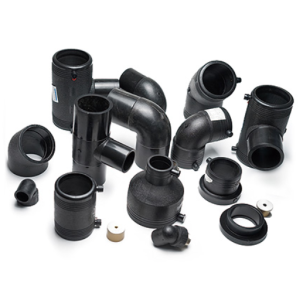
To obtain a safe and efficient installation of HDPE pipe fittings, careful preparation and execution are required. Below is a short guide on how to install those:
- Preparation: Begin by cutting the HDPE pipes using a suitable pipe cutter to attain clean, straight edges.
- Clean the Ends: Remove all dirt or debris from the pipe’s ends to better seal them during connection.
- Heat (if necessary): Some types of fittings – mainly when you use electrofusion or butt fusion methods – require heating of the ends of both the pipe and fitting according to the manufacturer’s specifications.
- Joining: For mechanical fittings, insert the pipe into the fitting and tighten bolts or clamps as instructed. For fusion joints, align pipes and fitting, apply heat, and let cool and set properly.
- Testing: Pressure test is carried out after installation to detect leakages while assuring connection integrity before system operation.
Follow these steps for an effective and long-lasting installation of HDPE pipe fittings.
Fusion: Techniques for Joining HDPE Pipes
Fusion techniques are crucial for solid and leak-proof joints in HDPE piping systems. Two primary methods used for joining HDPE pipes through fusion include butt fusion and electrofusion methods.
- Butt Fusion: It involves aligning two HDPE pipes’ ends and heating them with fusing machines until they become soft. After sufficient heating, their ends are pushed together, thus forming a uniform joint between them. Its wide application area arises from its reliability and strength, which makes it ideal for high-pressure requirements.
- Electrofusion: In this case, an electrofusion fitting with built-in heating elements is used. These fittings are placed over HDPE pipes’ ends, after which an electric current heats the element, causing the plastic to melt and eventually fuse. Electrofusion is particularly beneficial where there may be limited space, making it difficult to join using traditional fusing techniques.
Both fusion technologies create robust connections that preserve piping system integrity, which is necessary for applications across diverse industries, including water supply and gas distribution. Proper fusion joining requires the right training and adherence to manufacturer guidelines.
Butt Fusion Fittings: A Step-by-Step Guide
The following are the steps I have found crucial in making a firm and effective connection for butt fusion fittings on HDPE pipes:
- Preparation: Start by cutting off the ends of HDPE pipes straight so that they are neat and free of dirt. Gently rub the surface with a scraper to remove any oxidizing layer.
- Alignment: Afterwards, place the pipes in the fusion machine, ensuring they are well placed without leaving any space between them, which could result in weak joints.
- Heating: After setting the appropriate temperature on the fusion machine, I allow both pipe ends to heat for a given period. Overheating can damage materials, so it is vital to monitor the heating process.
- Joining: Therefore, I quickly remove the tubes from the furnace and press their corresponding edges together using equal force at this temperature point. The pipes should stay still for as long as it takes for joint hardening to solidify them.
- Cooling: On this note, pressure continues to be exerted until cooling is completely done, usually taking more than one minute. Proper cooling prevents the deformation of coupling during formation.
Following these steps will enable me to achieve connections that last longer without leaks, which is critical for the sustainability of piping systems in various applications.
Electrofusion: An Alternative Joining Method
Electrofusion is another method to connect HDPE pipes without fusion equipment. This technique uses electrofusion fittings that come pre-installed with heating elements. Electrical current heats up and cools down again after melting together pipe surfaces and into each other through these heating elements, resulting in unbreakable bonds between them. The technique requires little preparation or tooling because it is a relatively simple procedure. It is suitable for areas with less space or where conventional fusing methods cannot be employed.
- Preparation: In contrast to butt fusion, pipe ends must be clean and free from contaminants. Usually, oxidation is cleared away by scraping with a scraper blade before fusing.
- Fitting Installation: A typical example is the fitting getting over the ends of the pipes prepared for use during this kind of fusion.
- Electrofusion Process: An electrofusion control unit usually supplies a set voltage. After heating, the joint is cooled normally to form a reliable connection.
This makes it useful for complex installations, as it can be used with different pipe sizes and fittings, thereby ensuring that such joints are strong and free from leaks.
What Are the Benefits of Using HDPE Pipe Fittings?
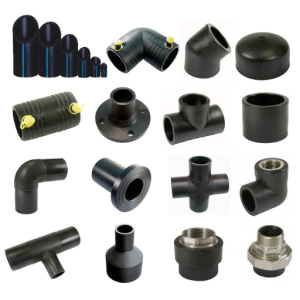
HDPE pipe fittings are advantageous for various applications, making them popular. At the outset, they have high resistance to corrosion and chemicals, which ensures long life and reduced maintenance costs. Secondly, being lightweight eases installation as less support is needed than traditional materials. It is also flexible, so there will be fewer joints, thus reducing the possibility of leakages. Its outstanding impact resistance lessens the likelihood of damage from external forces, making it suitable for demanding environments. Finally, the smooth inner surface of HDPE fittings promotes the efficient flow of fluids, which leads to energy savings in pumping systems.
Durable: Longevity and Resilience
The durability and robustness of HDPE pipe fittings under different conditions is well known. They do not break down under extreme temperatures or when exposed to UV radiation or environmental stresses, so their structural integrity remains intact over time, reducing frequent replacements. Properly installed and maintained HDPE fittings can last for 50 years or beyond. Additionally, these fittings are resistant to corrosion and chemical degradation and are, hence, very useful in hostile surroundings. This aspect guarantees reliable performance standards and reduced lifecycle costs since repairs and replacements are infrequent. Therefore, whether it is a short-term or long-term project, HDPE pipe fitting presents an ideal investment opportunity for both scenarios.
Corrosion: Resistance to Chemical Damage
From my experience, one quality that stands out in HDPE fittings is their high resistance to corrosion and chemical attack. Unlike traditional materials that may deteriorate in harsh environments, HDPE stands up against most acids, bases, and solvents. This property is needed, for example, in chemical processing plants and wastewater management, which involves aggressive chemicals. I use HDPE fittings to ensure the durability of my projects without worrying about maintenance issues related to corrosion. In addition, this dependability heightens functionality and dramatically lowers expenses on the overall project, meaning that HDPE can be used for various purposes, making it an invaluable choice.
High-density polyethylene: Environmental Benefits
High-density polyethylene (HDPE) has several environmental advantages, making it attractive as a construction material. First of all, HDPE is recyclable, allowing for waste reduction and promoting a circular economy. Many products manufactured from HDPE can be recycled many times without any loss of properties, so there would be less environmental impact on the company’s account. Additionally, manufacturing HDPE emits less greenhouse gases than other materials; hence, it is a more environmentally friendly choice. Besides, because of its ultraviolet (UV) light resistance and strength, additional protective coats are not required, and such coatings are often made using poisonous substances. By going for different purposes with the help of HDPE, businesses and customers contribute to reducing their general environmental footprint while ensuring that their plans continue to be robust and efficient enough.
What Types of HDPE Pipe Fittings Are Available?
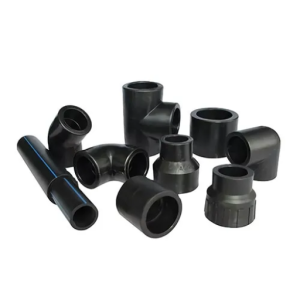
There are various types of HDPE pipe fittings to suit different applications and installation demands. The most common ones include elbows that enable change in the flow direction, tees that allow one pipe to branch out into two, reducers that link pipes with varying diameters, and couplings used for connecting two pipe ends. Conversely, flanges join a pipe with other equipment, while caps and plugs are used to close off the end of a pipe. All these fittings have been designed to retain the integrity of HDPE systems during installation without compromising their performance.
Elbow: 45 Degree and 90 Degree Elbows
In HDPE piping systems, elbows are critical for changing flow directions. There are two main types: 45-degree and 90-degree elbows. A gradual transition is ensured by a 45-degree elbow, which is ideal for systems requiring low turbulence and minimal pressure loss. Contrariwise, a 90-degree elbow is applied in cases where there must be quick turning points; hence, it can be found chiefly in places needing significant change of direction. They are both available in different sizes to match up easily with HDPE pipes, thus providing a solid connection between them that does not allow any leakage, thereby keeping the entire system’s consistency intact. Their ability to withstand demanding climatic conditions makes them valuable for plumbing and industrial sectors because of their toughness or sturdiness.
Tee: Reducing Tees and Standard Tees
Tees are crucial fittings in HDPE piping systems that enable several pipes to be connected. The two main types of tees are standard tees and reducing tees. Standards tee allows three branching pipes that are the same size while its counterpart can connect a smaller pipe to a bigger one, making it useful when there is a change in the size required. Both types are designed in such a way that they can withstand chemical attack and will work well under different environmental conditions. From my experience working with these fittings, I have found them necessary to guarantee smooth fluid flow and structural soundness within the piping system.
Adapter: Flange Adapters and Threaded Adapters
Flange and threaded adapters are essential parts of HDPE piping systems that allow various pipe connections to occur. These make connections between HDPE pipes and flanged components, giving a more straightforward access point for equipment joining like pumps, valves, etcetera (y). Such types usually come with holes already drilled where bolts can pass through to maintain tightness during assembly. Conversely, threaded adapters possess either male or female threads at their ends, allowing them to be easily attached to threaded pipe or fitting joints. Such connectors enable seamless transitions between materials such as PVC or metal and high-density polyethylene since they join dissimilar materials. These two varieties of adaptors form watertight seals that do not leak into plumbing installations used for irrigation and other areas in industries.
Where Are HDPE Pipe Fittings Commonly Used?
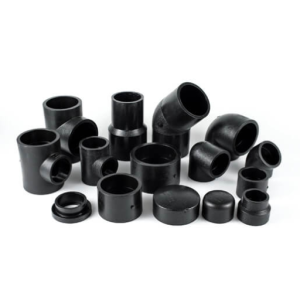
HDPE pipe fittings are standard and used in various applications because they are long-lasting and resistant to environmental stresses. They are used a lot in water distribution systems, ensuring efficient flow management that can be relied upon. Additionally, irrigation systems in agriculture and landscaping employ these fittings heavily due to their ability to survive harsh climatic conditions while maintaining their structure. Enough evidence shows that HDPE is ideal for chemical transport since it can resist corrosion, making it the best material for manufacturing pipes. Again, HDPE pipe fittings are also crucial in wastewater treatment facilities that safely transport sewage.
Industrial: Applications in Various Industries
Due to their toughness, HDPE pipe fittings are an integral part of many industries. Used majorly in the oil and gas industry for carrying hydrocarbon fuels and other liquids, they provide a lighter alternative to conventional materials, which are nevertheless very durable. Stormwater management systems within the building industry also depend on HDPE fittings, which ensure proper drainage and reduce soil erosion, among other things. Also notable is that HDPE is widely used in food processing, where its non-toxic properties make it suitable for conveying potable water and food. It’s interesting how adaptable yet reliable HDPE fittings have proven themselves capable of meeting diverse requirements from different fields of application.
Drainage: Use in Water and Wastewater Systems
The role of HDPE pipe fitting in managing water and wastewater systems cannot be overstated. My experience with them shows they are highly effective for drainage and sewage systems because of their high strength and corrosion resistance. This makes them easy to install, especially in difficult situations where other materials might fail. Besides preventing leakage problems and lowering maintenance costs, these products are also perfect for running sustainable drainage systems since they ensure adherence to environmental regulations. Importantly, the ability of these fittings to serve numerous purposes is a critical factor in ensuring efficiency in municipal and industrial applications, thereby enhancing the overall performance of such a system.
Water Supply: Ensuring Clean and Safe Water Distribution
HDPE pipe fittings are essential in ensuring clean and safe water delivery systems. The smooth inside surface guarantees a low bacterial growth rate, thus reducing any biofilm accumulation, resulting in a quality water supply. Also, HDPE does not corrode or scale, reducing frequent replacement and increasing its service life span. Many research findings by experts show that HDPE’s lightweight characteristic has facilitated more accessible transportation and installation than traditional materials, reducing installation costs. Moreover, HDPE fittings maintain drinking water purity because they do not react and have a long lifespan, meaning that most utility companies and municipalities can rely on them as the preferred choice in ensuring safe communities’ drinking water supplies.
How to Maintain and Ensure the Longevity of HDPE Pipe Fittings?
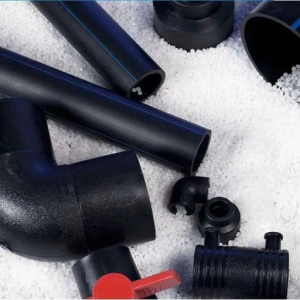
Regular inspections of HDPE pipe fittings are crucial for their maintenance and durability. Look for signs of wearing, cracking, or leaking, which should be handled promptly to avoid further damage. It is also essential to clean the fittings with mild detergents to help eliminate any dirt or debris accumulating over time, ensuring they always run smoothly and efficiently. Exposure of HDPE to extreme temperatures must be avoided because it can compromise its integrity. Properly align and connect fittings during installation to prevent unnecessary stress. Finally, managing the surrounding environment can lead to consistent water quality, extended lifespan, and better performance of HDPE pipe fittings.
Resistant: Preventing Wear and Tear
HDPE pipe fittings are designed with high resistance against wear and are hence suitable in many applications. Their molecular structure provides strength, enabling them to withstand heavy blows without breaking. The smoothness of the HDPE surface prevents the build-up of materials, minimizing frictional forces and wear during operations. Besides, HDPE is resistant to various chemicals, thus it does not lose its usage properties when exposed to aggressive substances. Cleaning and examining regularly is vital in avoiding any potential damage from happening. Adhering to the manufacturer’s instructions when installing and using these fittings will enhance their durability for optimal use throughout their life cycle.
Specify: Choosing the Right Fittings for Your System
When choosing fittings for my HDPE piping system, I always consider factors such as type of application, pressure rating, and compatibility with adjacent materials. I needed to pay attention to matching the fitting specifications with pipe diameter and wall thickness to get a secure fit that would not leak, as suggested by some credible sources I found online. Additionally, specific operational conditions like temperature and chemical exposure are considerations in my fitting choice. Apart from this, I must observe any instructions given by manufacturers regarding how to install them when purchasing or maintaining them if they are to last long and be efficient.
Accordance with ASTM: Adhering to Standards for Quality Assurance
Ensuring that HDPE piping systems are of the highest quality means following ASTM standards. ASTM International provides a comprehensive set of guidelines comprising specifications for HDPE materials and fittings. For example, compliance with standards like ASTM D3035 for pressure-rated pipes as well as ASTM F714 for large-diameter pipes assures users that their piping systems meet industry benchmarks in terms of durability and safety. This encourages uniform product quality while increasing user confidence about system reliability across various applications. Regular audits conducted by suppliers and certification processes enhance quality assurance, ensuring testing and verification of all constituents against these specific standards are done regularly.
Reference sources
- HDPE Fittings – Industrial PVF/MRO Supplier
- HDPE Pipe & Fittings – Your Partner in the Trenches
- HDPE Pipe and Fabricated Fittings
Frequently Asked Questions (FAQs)
Q: What are HDPE Pipe Fittings?
A: HDPE (High-Density Polyethylene) pipe fittings are components used to connect sections of polyethylene pipe in various configurations. These fittings are known for their durability, flexibility, and resistance to corrosion, making them ideal for industrial piping systems.
Q: How do reducers work in an HDPE piping system?
A: Reducers connect pipes of different diameters within an HDPE piping system. They ensure a smooth transition between different pipe sizes and maintain the flow and pressure of the transported material.
Q: What types of HDPE pipe fittings are available?
A: Various HDPE pipe fittings are available, including elbows for HDPE pipe, wyes, couplings, tees, reducers, and end caps. These fittings can be injection molded or fabricated to meet specific needs.
Q: Can HDPE pipe fittings be used with other materials like PVC pipe?
A: HDPE pipe fittings can be used with other materials, like PVC pipe. However, compatibility and proper installation techniques are crucial to maintaining the integrity of the piping system.
Q: What is the significance of the SDR rating in HDPE pipes?
A: The SDR (Standard Dimension Ratio) indicates the wall thickness of HDPE pipes relative to their diameter. A lower SDR means a thicker wall and higher pressure rating, so it’s important to select the appropriate SDR for your application.
Q: Are HDPE pipe fittings suitable for residential applications?
A: Yes, HDPE pipe fittings are suitable for residential applications due to their durability and resistance to environmental stress. They are often used in water supply systems, drainage solutions, and irrigation.
Q: How do I determine the availability of specific HDPE fittings?
A: To determine the availability of specific HDPE fittings, you can check with manufacturers or suppliers who offer a variety of products and services. For specific inquiries, you may need to contact us directly.
Q: What are the benefits of using fabricated HDPE fittings?
A: Fabricated HDPE fittings offer custom solutions for complex piping systems. They are made from high-quality PE resin and can be tailored to meet specific dimensional and performance requirements, ensuring a perfect fit and reliable performance.
Q: How are HDPE fittings installed?
A: HDPE fittings can be installed using various methods such as butt welding, electrofusion, or mechanical joints. Following the manufacturer’s guidelines and industry standards like ASTM D3261 and AWWA is essential to ensure proper installation and performance.
Q: Where can I find more information about HDPE pipe fittings?
A: For more information about HDPE pipe fittings, including detailed product specifications and installation guidelines, visit our website or contact us directly. We offer a variety of resources to help you make informed decisions about your piping system needs.



